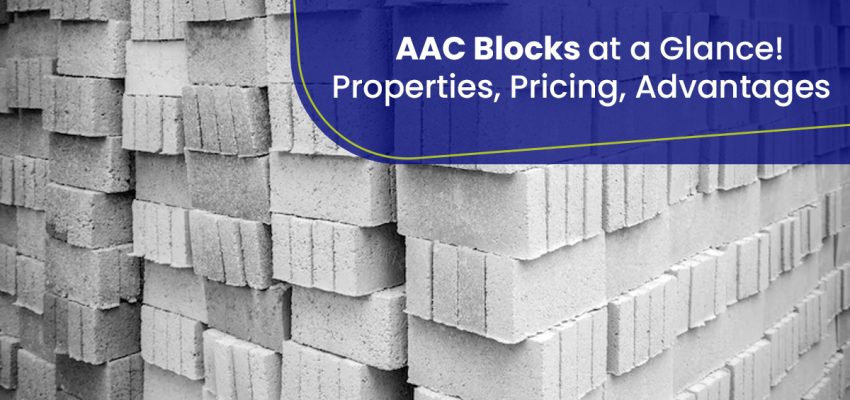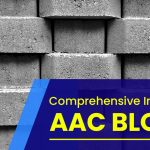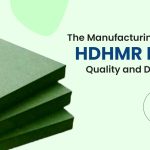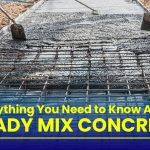Autoclaved Aerated Concrete (AAC) blocks have emerged as an innovative, eco-friendly building material, offering a unique combination of properties that make them a versatile and practical choice for modern construction. This article explores AAC blocks in detail, providing a comprehensive overview of their manufacturing process, types, properties, pricing, advantages, and installation best practices.
Post your Requirement
What are AAC Blocks?
AAC blocks, also referred to as Autoclaved Cellular Concrete (ACC) or Autoclaved Lightweight Concrete (ALC), are precast, lightweight, foam concrete building materials. Comprising a mixture of cement, lime, sand, water, and a small amount of aluminium powder, AAC blocks undergo an expansion process while being produced, which creates air pockets throughout the material, giving it a porous, foam-like structure. The aerated concrete is then steam cured under pressure in an autoclave, increasing its structural stability and final strength.
The resulting AAC blocks are durable, fire and pest resistant, thermally efficient, and lightweight – about a third of the weight of conventional concrete. Their extreme lightweight translates into benefits for builders and homeowners by reducing construction timelines and costs.
Manufacturing Process of AAC Blocks
Here we have mentioned the manufactiring process of AAC Blocks:
- Raw material preparation: Technical grade quartz, high-quality lime, gypsum, cement, water and aluminium powder are measured and mixed to prepare the base raw material.
- Mixing: The raw materials are thoroughly blended to produce a homogenous mix with an even consistency.
- Pouring: The mix is poured into moulds of different sizes to form the blocks.
- Pre-setting: The poured mix is allowed to set initially at room temperature before being moved. This early hardening allows the blocks to retain their shapes once out of the moulds.
- Cutting: The semi-set blocks are trimmed to required dimensions as needed once they achieve handling strength.
- Autoclaving: The trimmed blocks are subjected to high-pressure steam curing in autoclave vessels. The temperature inside reaches 190°C – 215°C as saturated steam achieves pressure of 8 to 12 bars.
- Cooling and stacking: The autoclaved blocks are cooled and stabilized before being stacked and stored, ready for transportation.
Types of AAC Blocks
AAC blocks are available in a range of densities and grades to suit different construction requirements:
- Standard blocks: General purpose blocks with density range of 550-650 kg/m3. Offer optimal balance between strength and thermal insulation properties.
- High strength blocks: Density above 650 kg/m3, with higher compressive strength for greater load-bearing capacity. Include reinforced blocks as well.
- Super high strength blocks: Extra-high density (800-1000 kg/m3) blocks, equivalent to conventional brick and concrete blocks in compressive and shear strength.
- Lightweight blocks: Lower density (less than 550 kg/m3) Thermalite blocks meant for partition walls or external walls of low-rise buildings. Have enhanced thermal insulation.
- Special application blocks: Customized blocks with properties calibrated for specific applications like sound absorption, fire resistance and moisture resistance.
Advantages of Using AAC Blocks
- Structural Strength: Suitable for multi-storey load-bearing structures. Reinforced blocks allow slimmer walls without compromising stability.
- Lightweight: Easier transportation and reduction in steel usage with less dead load. Allows faster construction.
- Thermal Comfort: Lower energy bills with ability to maintain comfortable indoor temperatures.
- Noise Insulation: Effective sound barrier due to intrinsic porous structure.
- Durability: Long service life and resilience against seismic activity, water damage and fire. Does not degrade or corrode over time.
- Resource Efficiency: Comparatively greener manufacturing process and lifecycle performance.
- Design Flexibility: Ease of cutting, chasing and cladding provides greater architectural freedom.
Cost Economics of AAC Blocks
Below we have stated the cost economics of AAC Blocks:
- Initial Purchase Cost: ₹3200-₹4000 per m3, higher than clay bricks but cheaper than conventional concrete blocks.
- Transportation Costs: 60-70% lighter weight leads to substantial savings in transport expenses over long distances.
- Construction Cost: Faster blockwork with thinner walls reduces labor and mortar costs, number of days required.
- Lifetime Savings: Energy efficiency results in significant long term cost benefits. Does not require recurring maintenance.
While the initial investment may be more than burnt clay blocks, AAC blocks pay for themselves over years through lower running expenses for occupants, mainly energy bills. Their advanced properties also translate into savings in other areas to offset higher purchasing rates.
Installing AAC Blocks
Key Guidelines Correct techniques must be followed to leverage the full potential of AAC blocks:
- Prepare level surface and apply mortar layer to base using notched trowel. Maintain verticality using spirit level.
- Ensure proper block alignment and orientation. Place reinforced blocks as specified.
- Use appropriate cutting equipment to modify block dimensions if required.
- Fill any gaps between blocks with mortar.
- Smooth out once initial set happens.
- Follow design specifications for structural reinforcement at the required intervals.
- Cure the completed masonry by spraying water 2-3 times daily for minimum seven days.
Conclusion
AAC blocks, with their innate sustainability, structural capabilities and thermal properties are an optimal solution for the demands of modern construction. Robust, durable and energy efficient, they represent the future of walls while delivering substantial savings in operational costs for a building’s entire life cycle. With rising adoption across residential and commercial spaces, AAC blocks are gearing up to become the mainstream walling option, outpacing conventional bricks and cement blocks.
FAQs
Q-1. How are AAC blocks different from traditional concrete blocks?
A-1. AAC blocks differ from traditional concrete blocks due to their unique composition. They include cement, lime, sand, water, and aluminium powder, undergoing a specialized aeration process. This results in lightweight, porous blocks with excellent insulation, fire resistance, and sustainability, setting them apart from conventional materials.
Q-2. Are AAC blocks suitable for all types of construction projects?
A-2. Yes, AAC blocks are versatile and suitable for various construction projects. Their diverse types, including standard blocks, fly ash blocks, lintel blocks, soundproof blocks, decorative blocks, and high-strength blocks, cater to specific needs. From residential buildings to commercial structures, AAC blocks offer flexibility and performance.
Q-3. Are AAC blocks cost-effective despite their initial higher upfront costs?
A-3. Absolutely, While the initial cost of AAC blocks might be higher, the long-term savings arise from reduced transportation and installation expenses. Moreover, their energy-efficient properties contribute to overall cost savings, making AAC blocks a cost-effective and sustainable choice in the construction industry.


















Post A Comment